Black and white conversion is a mysterious process. There are many ways to do it and none is objectively any better than any other for every photo. So, these are guidelines, really, in the spirit of a recipe. But unlike following a recipe for baking a cake, we are not all trying to create the same photo. Keep in mind that every photo is different and will require slightly different values for any image editing technique.
Here’s a photo I took on a hike recently with my kids:
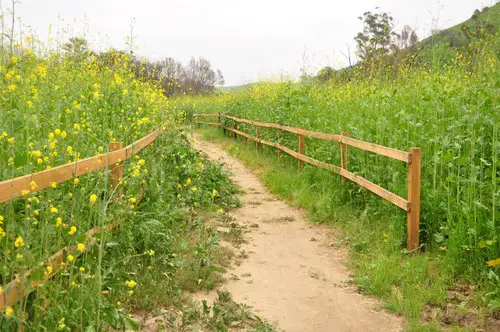
To compare with the channel mixer conversions below, first I’ll show the results from a simple average color desaturation. This is a simple conversion, it’s fast, and it’s very easy to do. In Photoshop it’s Image | Adjustments | Desaturate. In GIMP it’s Color | Desaturate.
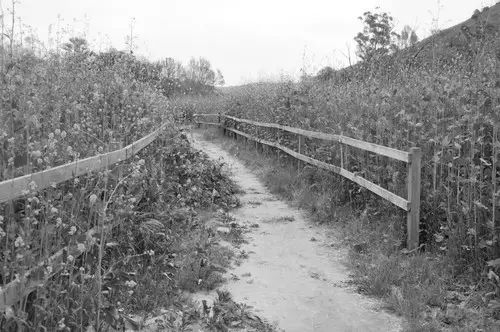
Many people, myself included, feel that this method often results in lifeless photos. If you’re going to convert this way, you’ll be doing yourself a favor if you also boost the contrast after the fact:
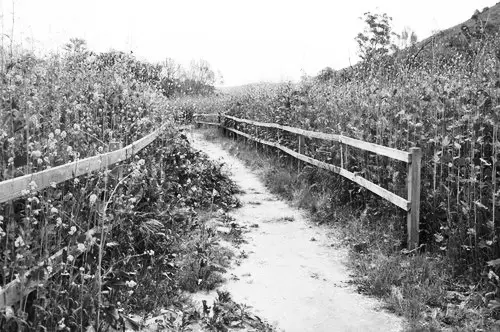
I think the simplicity of just desaturating a photo and boosting the contrast has a lot of appeal. It’s arguably the most straightforward way to do a black and white conversion. And again, this is a subjective process. It’s a success if you’re happy with the results.
Before we go on, a tiny bit of channel mixer theory:
Every digital color photo is made up of red, green, and blue data. In JPG images, these colors combine in varying levels from 0-255 for each pixel, resulting in approximately 16 million different color combinations. The channel mixer works by manipulating the red, green, and blue in a photo. The mixer allows you to change the overall impact of each channel on the photo as a whole. By checking the “monochrome” box, you are asking the mixer to “flatten” those color channels into a single channel which is represented as a level of gray from 0-255: black and white.
So, for example, if you set the red channel to 100%, the blue channel to 0, and the green channel to 0 (100/0/0), you will get a black and white photo where the gray level for any pixel is equal to whatever the red level was. If you set the values to 50/50/0 then the gray level will depend half on the red and half on the green. Here’s an example:
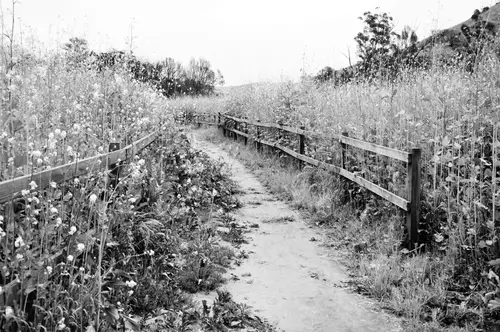
In the example above, the grey level is determined solely by the green channel (0/100/0). The greener something is, the whiter it is in the conversion. The redish posts and path are a little darker. The greenish stalks are very bright. The sky is white in all of these conversions because it was blown out—all of the channels were maxed out in the sky.
Here’s another example with the same starting photo:
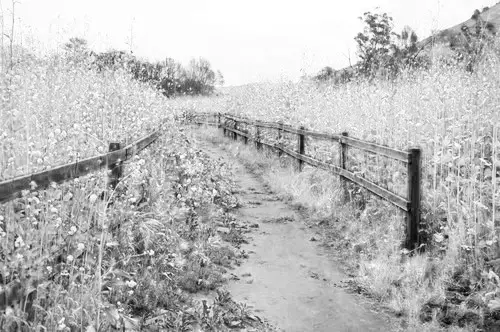
In this example, I continued moving the red channel into the negative, to enhance the reduction of the red channel. The mixer allows values from -200 to +200. This allows you to increase or decrease the brightness of a channel. In this case, by moving the red to -100, it strongly darkens anything in the photo with a red component. If you want to keep the overall brightness constant you need to make your levels always add to 100. In this example: -100 + 200 + 0 = 100. On the other hand, you can let the values go higher or lower than 100 to change the overall brightness. In Gimp, there’s a checkbox called “Preserve luminosity” which does the math for you automatically as you move the sliders.
Last example and the version I like the best:
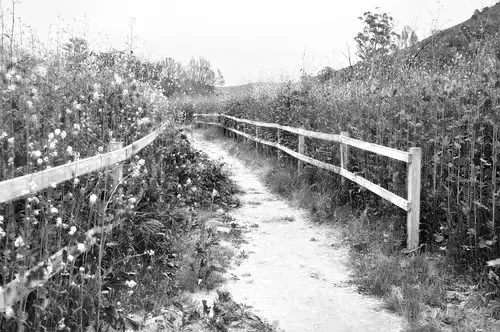
In this version I used the mixer to darken the foliage (green = -30) and brighten the path and fence (red = 130). Why? I just like it better this way.
The channel mixer can be mysterious because it’s difficult to visualize the result. My recommendation is to simply play around with it until you find values you like. After a while, you’ll begin to get an intuitive feel for which values you prefer for different kinds of subjects and colors in any given photo. But don’t let that stop you from experimenting. You may surprise yourself by trying unusual mixer values. Above all, don’t paralyze yourself trying to achieve the mythical goal of a “perfect” black and white conversion.









Thank’s,it’s nice to see a the technique with “talking” examples.
Excellent article. It really takes the mystery out of using the channel mixer. I’m familiar with the tool, but really needed this explanation of how, for example, using a high green value will result in green patches being lighter, etc.
What a great explanation. With your permission, I’d like to make reference to this and share it with other amateur photographers. Looking forward to other insights from you.
Please do. Share away.
My most often used B&W conversion method is to convert the image to LAB, remove the A & B channels, leaving you with only the L channel… Works like a charm.
Nice article. No need to run the camera with B&W scene settings (such as RX100). Do not misunderstand me, it gives you great results but it is better shooting in RAW and then play with pp, because you have more control.